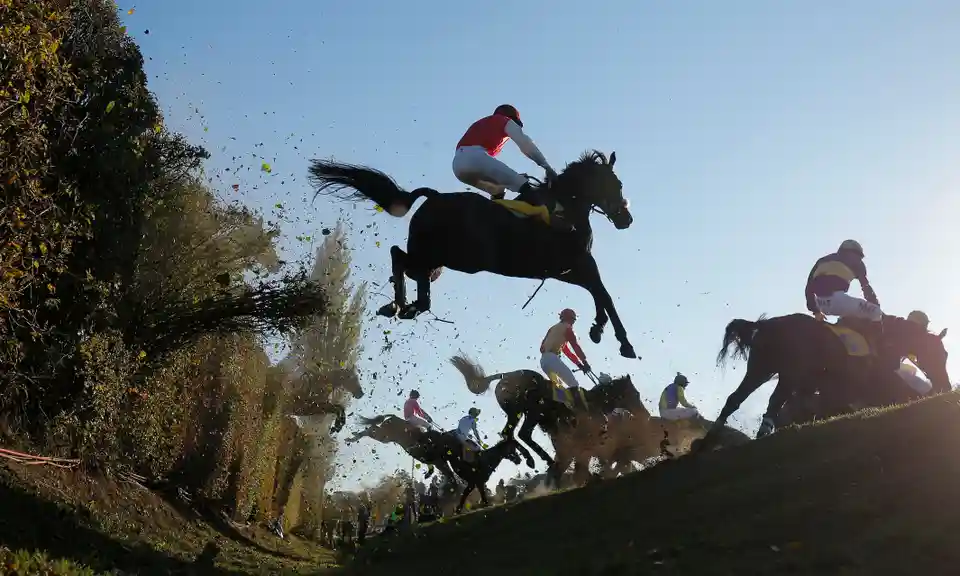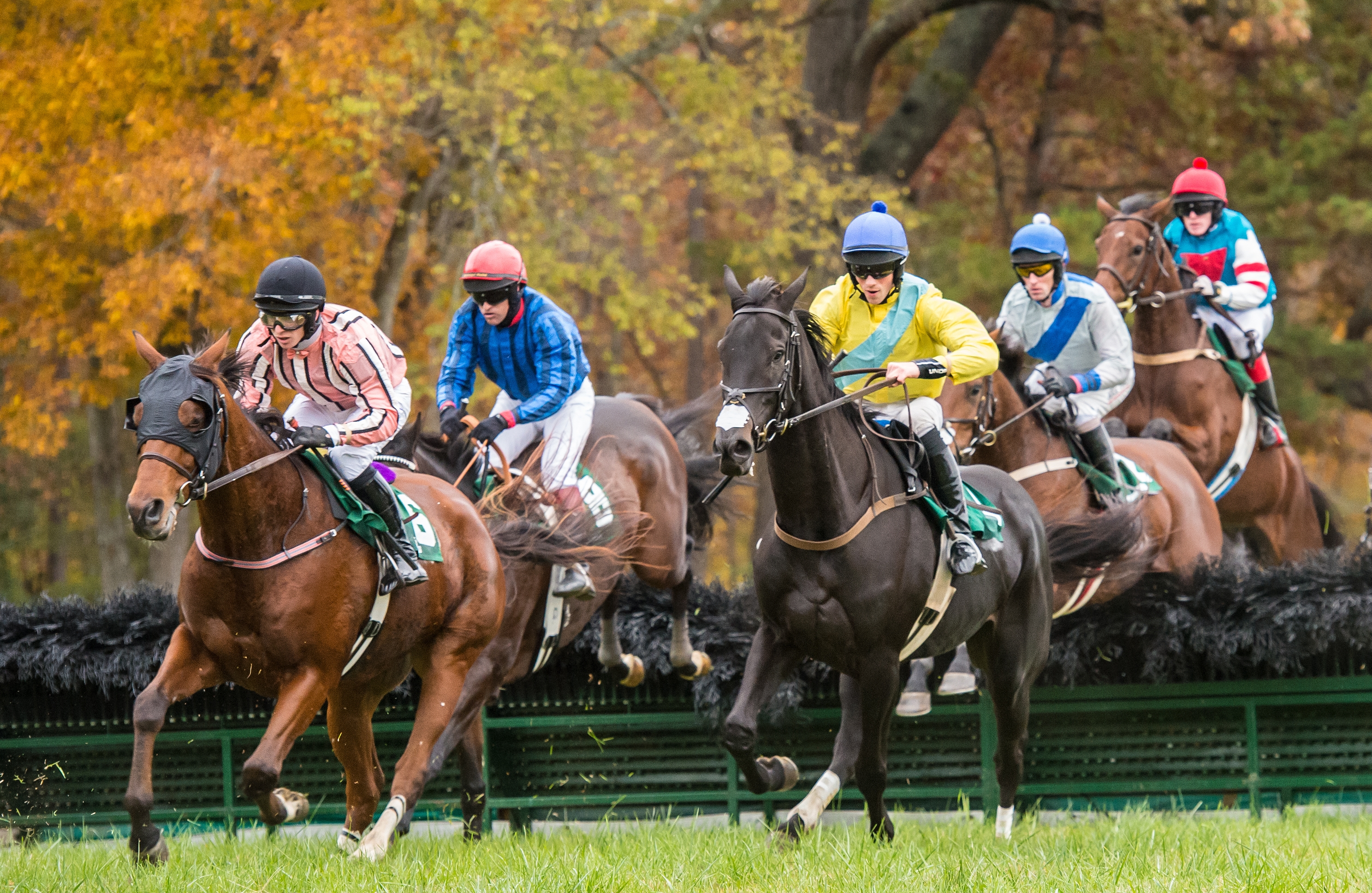History and Origins of Steeplechase Racing

Steeplechase racing, a thrilling equestrian sport, has a rich history dating back centuries. Its origins lie in the tradition of fox hunting, where riders would race across the countryside, often encountering obstacles like fences, ditches, and streams. Over time, these informal races evolved into organized events, laying the foundation for the modern steeplechase we know today.
Evolution of Steeplechase Racing
The evolution of steeplechase racing can be traced through several key milestones:
- Early Origins (17th Century): The origins of steeplechase racing are rooted in fox hunting, a popular pastime among the British aristocracy. Riders would race across the countryside, often using landmarks like church steeples as navigation points, giving rise to the term “steeplechase.” These early races were informal and often dangerous, with riders facing challenging terrain and unpredictable obstacles.
- Formalization (18th and 19th Centuries): As fox hunting gained popularity, organized steeplechase races began to emerge. The first recorded steeplechase race took place in 1752 in England, and the sport quickly gained momentum, attracting large crowds and becoming a popular spectator event. During the 19th century, formal rules and regulations were established, including standardized courses and race distances.
- Modern Era (20th Century): The 20th century witnessed the further development of steeplechase racing, with the establishment of professional organizations and the introduction of standardized courses and race formats. The sport spread to other countries, including Ireland, France, and the United States, and became a prominent part of the equestrian racing calendar.
Historical Significance of Steeplechase Racing, Steeplechase race
Steeplechase racing has played a significant role in shaping equestrian culture and history:
- Social and Cultural Impact: Steeplechase racing has long been associated with social status and prestige, particularly in its early years. The sport attracted wealthy patrons and provided opportunities for social gatherings and entertainment. The iconic Grand National steeplechase in England, for instance, is a major cultural event, attracting a global audience.
- Sporting Tradition: Steeplechase racing has become an integral part of the equestrian racing calendar, offering a unique and challenging test of horse and rider. The sport has produced numerous legendary horses and jockeys, who have left an indelible mark on equestrian history.
- International Development: Steeplechase racing has spread to various countries around the world, contributing to the global development of equestrian sports. The sport has fostered international competition and collaboration, promoting cultural exchange and sporting excellence.
Differences Between Steeplechase Racing and Flat Racing
Steeplechase racing differs from flat racing in several key aspects:
- Course: Steeplechase races are held on courses with obstacles, including fences, ditches, and water jumps, while flat races are run on flat tracks without obstacles.
- Horses: Steeplechase horses are bred for strength, stamina, and agility, while flat racehorses are typically bred for speed and endurance. Steeplechase horses need to be able to jump high and land safely, while flat racehorses focus on speed and stamina.
- Jockeys: Steeplechase jockeys need to be highly skilled and experienced in navigating obstacles, while flat race jockeys focus on maintaining a good position and strategy.
- Distance: Steeplechase races are typically longer than flat races, ranging from two miles to four miles or more. The longer distances and obstacles require horses to have greater stamina and endurance.
- Equipment: Steeplechase horses wear specialized equipment, including a saddle with a high cantle to provide better balance when jumping, and a bridle with a curb bit to provide more control over the horse.
The Steeplechase Course and Obstacles

Steeplechase racing, a unique equestrian discipline, demands both speed and agility from both horse and rider as they navigate a challenging course featuring a variety of obstacles. The course design is intended to test the athleticism and resilience of both horse and rider, and it is a spectacle that draws crowds to witness this exhilarating event.
Course Layout and Terrain
A typical steeplechase course is approximately 3 to 4 miles long, with the exact length varying depending on the race. The course is often set on a combination of terrain, including:
- Grassland: The majority of the course is typically made up of open grasslands, which offer a relatively smooth surface for running.
- Fences: The course features a variety of fences, which are the defining characteristic of steeplechase racing.
- Water Jumps: The course may also include water jumps, which require horses to jump into and out of water.
Obstacles and Their Purpose
Steeplechase obstacles are designed to test the horse’s jumping ability, athleticism, and the rider’s skill and courage.
- Fences: These are the most common obstacles in steeplechase racing. They are typically made of wooden rails or brush, and they can be either fixed or movable. The height of fences varies depending on the race, but they are generally between 4 and 5 feet tall.
- Water Jumps: These obstacles require horses to jump into and out of a body of water, usually a ditch or pond. The water jumps can be challenging, as they can be deep and muddy. The water jumps test the horse’s willingness to jump into the water and the rider’s ability to keep their balance and composure.
- Banks: Steeplechase courses may also feature banks, which are steep inclines or declines. Banks test the horse’s ability to jump up or down a steep incline.
Challenges and Strategies
Navigating a steeplechase course is a demanding task, requiring both horse and rider to work in harmony. The challenges of steeplechase racing include:
- Jumping: Horses must be able to jump over a variety of obstacles, including fences, water jumps, and banks. The rider must guide the horse over the obstacle with precision and control.
- Pace: Steeplechase races are typically run at a fast pace, and horses must be able to maintain a high level of speed and endurance throughout the race. The rider must manage the horse’s pace and energy levels effectively.
- Terrain: The course is often uneven and challenging, requiring horses to be agile and able to adapt to changing terrain. The rider must be able to maintain control of the horse on uneven ground.
Strategies for Success
To succeed in steeplechase racing, both horse and rider must be well-trained and prepared. A few key strategies for success include:
- Horse Training: Horses must be trained to jump over a variety of obstacles and to run at a fast pace. They must also be able to handle challenging terrain.
- Rider Skills: Riders must be experienced in jumping and in controlling a horse at speed. They must also be able to maintain their balance and composure over challenging terrain.
- Course Knowledge: Riders must be familiar with the course layout and obstacles. They must know where the obstacles are located and how to approach them safely.
- Horse and Rider Partnership: The success of a steeplechase race relies on a strong partnership between horse and rider. They must be able to communicate effectively and work together as a team.
The Horses and Jockeys in Steeplechase Racing: Steeplechase Race

Steeplechase racing demands a unique blend of athleticism and temperament from both horse and rider. The horses must possess the strength, stamina, and agility to navigate challenging courses, while the jockeys require exceptional riding skills, strategic thinking, and unwavering courage.
The Horses
The physical characteristics and training required for horses to compete in steeplechase racing are crucial for success.
- Strength and Stamina: Steeplechase horses need to be strong enough to carry a jockey and jump over obstacles, and have the stamina to run long distances. They typically have a powerful build with strong legs and a deep chest.
- Agility and Jumping Ability: The ability to jump cleanly and efficiently over obstacles is paramount in steeplechase racing. Horses must have good balance, coordination, and a natural instinct for jumping.
- Temperament: Steeplechase horses must be brave and willing to face challenges, as they will encounter obstacles like fences, water jumps, and ditches. They should also be calm and responsive to the jockey’s instructions.
- Training: Training for steeplechase racing is rigorous and involves building strength, stamina, and jumping skills. Horses are gradually introduced to obstacles and trained to jump them correctly.
The Jockeys
Jockeys in steeplechase racing play a vital role in the success of their horses.
- Riding Skills: Steeplechase jockeys need to be highly skilled riders with exceptional balance and control. They must be able to navigate the course safely and effectively, guiding their horses over obstacles and through tight turns.
- Tactics: Steeplechase races are often unpredictable, and jockeys need to be strategic in their approach. They must consider the course, the weather, and the competition to make decisions about pace, positioning, and jumping strategies.
- Responsibilities: Jockeys are responsible for the safety and well-being of their horses. They must ensure that their horses are properly prepared and cared for, and they must make decisions that prioritize the horse’s health and safety.
Comparison to Other Equestrian Disciplines
Steeplechase racing demands a unique set of skills and strategies compared to other equestrian disciplines.
- Flat Racing: Flat racing focuses on speed and endurance over a flat course. While stamina is important in steeplechase, the focus on jumping and navigating obstacles sets it apart from flat racing.
- Show Jumping: Show jumping focuses on jumping technique and accuracy over a series of obstacles. Steeplechase racing incorporates jumping but also requires the stamina and tactical skills needed to complete a long course with multiple obstacles.
- Eventing: Eventing combines dressage, show jumping, and cross-country, which involves jumping over natural obstacles. Steeplechase racing is similar to the cross-country phase of eventing, but it typically involves longer distances and a more demanding course.
Steeplechase race – The steeplechase, a race that tests not only speed but also agility and determination, demands a unique blend of athleticism. It’s a race where hurdles are not just obstacles, but stepping stones to victory. And when these athletes take to the world’s biggest stage, the steeplechase olympics become a spectacle of grit and grace.
The steeplechase, a testament to human resilience, is a race where the finish line is not the only goal, but the journey itself.
The steeplechase, a race of grit and resilience, demands more than just speed. It requires the courage to conquer the obstacles, the water jumps and hurdles, that stand in the way. The story of Girma’s fall in the steeplechase, a moment captured in time, speaks volumes about the fragility of victory.
Girma steeplechase fall serves as a reminder that even in defeat, there is a lesson to be learned, a testament to the enduring spirit that drives athletes to rise above adversity. And so, the steeplechase continues, a race of trials and triumphs, a testament to the human will to overcome.